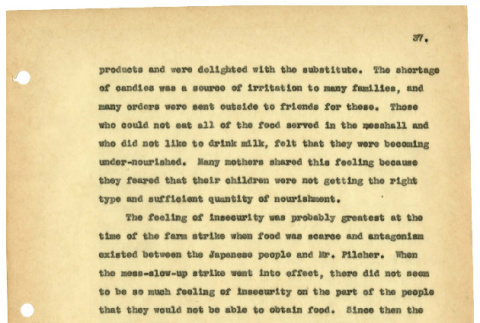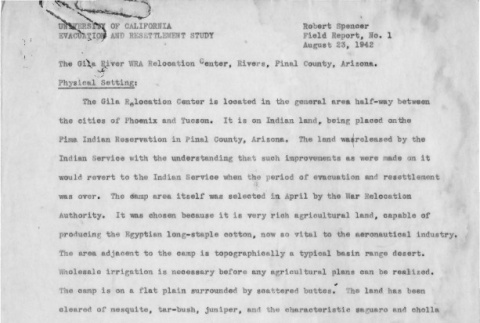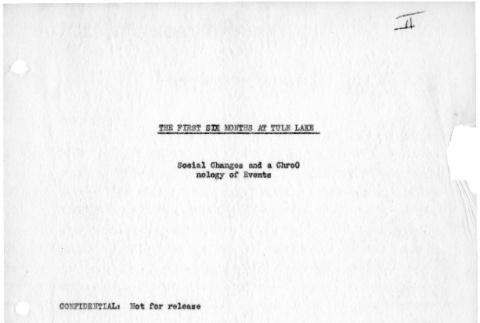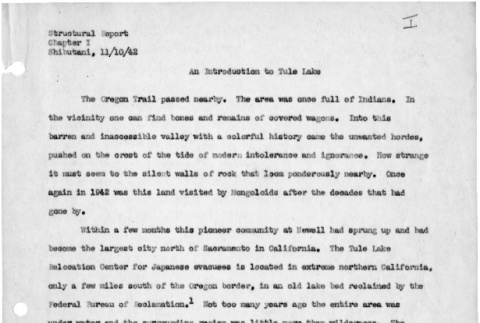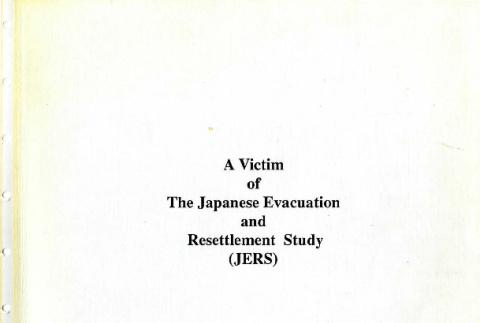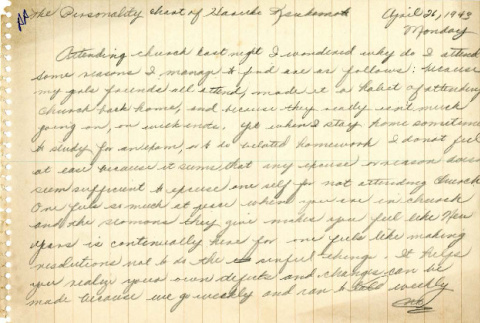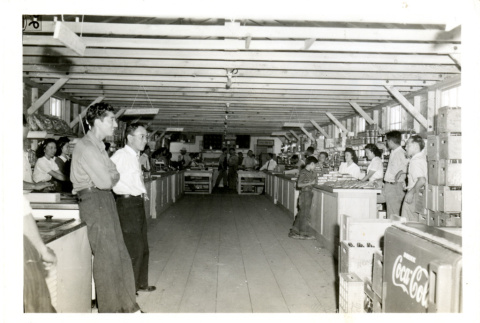Food
The eating facilities in the camps were large mess halls with long lines and crowded tables. Group living tended to erode family solidarity, as teenagers escaped parental authority by eating with friends rather than family. The quality of the food was poor and milk and fresh meat were constantly in short supply. Inexpensive foods such as wieners, dried fish, pancakes, macaroni and pickled vegetables were served often. The diets of the camp inmates improved only after they began growing some of their own food.
World War II
(231)
Concentration camps
(1434)
Food
(237)
237 items
237 items
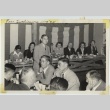
img
Farewell dinner at Heart Mountain concentration camp (ddr-densho-242-22)
Caption on front: "Tom Sashikara Aug '44." Caption by Ike Hatchimonji: "Heart Mountain Aug. 1944. Caption reads: 'Farewell dinner for Tom Sashikara leaving for Cleveland, OH. Guy Robertson, the camp director and Mrs. Pryne were there.' K. Hatchimonji is seen on left with his hand on his chin."
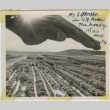
img
Hand over garden (ddr-densho-242-20)
Caption on front: "My V garden in v.g. Area The hand of Mike Aug. 1944."
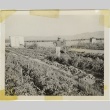
img
Man in a garden (ddr-densho-242-19)
For 16.1, 16.2, and 16.3. Caption by Ike Hatchimonji: "Heart Mountain Victory Gardens 1943-45. Organized by Kumezo Hatchimonji who supplied the Japanese vegetable seeds which were in storage after he left for camp. It was very successful because farmers were ablt to grow their favorite crops and supply them to the other internees. Kumezo is seen …
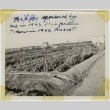
img
Victory garden (ddr-densho-242-21)
Caption on front: "The V.G. sponsored by me in 1943. This picture taken in 1944, August."
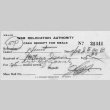
doc
Visitor's receipt for meals (ddr-densho-25-110)
In 1943, Mitsuo Iseri was on leave from the 442nd Regimental Combat Team. He visited Minidoka, and received this receipt for meals.
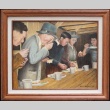
img
Dinner was served (ddr-densho-253-6)
Caption: "Dinner was served - and consumed standing up owing to lack of tables and chairs. Camp steward Arthur Hirano, former New York restauranteur. His first menu consisted of beef stew, steamed rice, string beans, peas, apricots, bread and jelly. His customers were appreciative."
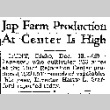
doc
Jap Farm Production At Center Is High (December 18, 1943) (ddr-densho-56-1000)
The Seattle Daily Times, December 18, 1943, p. 1
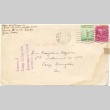
doc
Envelope and letter to Dr. Keizaburo "Kei" Koyama from Teru Koyama (ddr-one-5-40)
Slightly yellowed envelope addressed to Dr. Keizaburo Koyama in Camp Livingston from his wife, Teru Koyama, at Minidoka. Postmarked October 19, 1942. Along the top 10-23-1942 is written in red pencil. On the left side of the envelope is a purple "Censored" stamp. Inside the envelope is a letter dated October 17, 1942. Teru writes about …
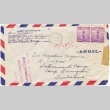
doc
Envelope and letters to Dr. Keizaburo "Kei" Koyama from Teru Koyama (ddr-one-5-20)
White air mail envelope with a red, white and blue border. The envelope is addressed to Dr. Keizaburo Koyama at Camp Livingston from his wife, Teru Koyama. The envelope is postmarked Jul 21, 1942, and in red pencil below the postmark is the date 7/25/42. On the left side of the envelope is a purple "Censored" …
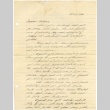
doc
Letter to Dr. Keizaburo "Kei" Koyama from Eva Koyama (ddr-one-5-38)
Letter dated Oct 5, 1942, to Keizaburo "Kei" Koyama from his daughter, Eva Koyama. In the letter Eva writes about life at Minidoka: Shin came to visit, school is starting soon, Mr. Mita's funeral, lunch, and Girl Scouts. Eva sends her regards to Dr. Tanaka and Mr. Ikeya.
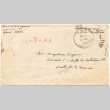
doc
Envelope and letter to Dr. Keizaburo "Kei" Koyama from Teru Koyama (ddr-one-5-72)
Envelope addressed to Dr. Keizaburo Koyama at the Santa Fe Detention Station from his wife, Teru Koyama, at Minidoka. Postmarked Oct 4, 1943. In the upper right corner “Internee of War/Free Mail” is written in place of a stamp. The numbers “10-8-43” are written along the top of the envelope in red pencil. Inside is a …
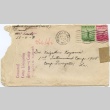
doc
Envelope and letters to Dr. Keizaburo "Kei" Koyama from Teru and Eva Koyama (ddr-one-5-33)
Envelope addressed to Dr. Keizaburo Koyama at Camp Livingston from his wife, Teru Koyama, and daughter, Eva Koyama. Postmarked Sep 21, 1942. To the left of the postmark is “9/26/42” written in red pencil. On the left side of the envelope is a purple "Censored" stamp. The left edge of the envelope is torn so that …
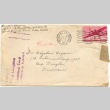
doc
Envelope and letters to Dr. Keizaburo "Kei" Koyama from Teru Koyama and Miriam Kiyo Koyama (ddr-one-5-30)
Envelope addressed to Dr. Keizaburo Koyama at Camp Livingston from his wife, Teru Koyama, and daughter, Miriam Kiyo Koyama. Postmarked Sep 16, 1942. In red pencil “9/20-42” is written to the left of the postmark. In the lower left corner is a purple "Censored" stamp from Camp Livingston. Inside the envelope are two letters, one from …
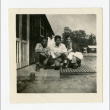
img
Geroge Naohara and Atsushi Ishida (ddr-csujad-38-92)
A photograph of Atsushi Ishida (center) and George Naohara (right) posing at the entrance to a mess hall in the Jerome camp in Arkansas. A photo from "George Naohara photo album" (csudh_nao_0001), page 21. See this object in the California State Universities Japanese American Digitization project site: nao_01_21_007
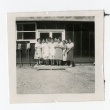
img
Ladies at Block 8 mess hall (ddr-csujad-38-103)
Photographed are a group of female incarcerees standing in front of "Dining" facility in the Jerome incarceration camp in Arkansas. The handwritten note on the backside reads: Ladies at Block 8 mess hall [in Japanese]. Title from note. A photo from "George Naohara photo album" (csudh_nao_0001), page 22. See this object in the California State Universities …
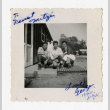
img
George Naohara and Atsushi Art Ishida in the Jerome camp (ddr-csujad-38-252)
Photographed are George Nobuo Naohara and Atsushi Art Ishida at the Jerome camp in Arkansas. George is wearing an apron. The photo was given to Mitzi Masukawa Naohara incarcerated in the Poston camp in Arizona. A photo from: Mitzi Naohara photo album (csudh_nao_0200), page 13. See this object in the California State Universities Japanese American Digitization …
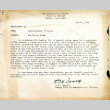
doc
Memo from WRA Administrative Division re: war ration books, May 18, 1943 (ddr-csujad-26-40)
Memo advising recipient to relinquish war ration books due to living in a "group institutional user establishment." See this object in the California State Universities Japanese American Digitization project site: mei_03_08_003
![Farm [farm workers loading truck] (ddr-csujad-26-72)](https://ddr.densho.org/media/cache/6f/14/6f1428a3dfdd2d74f5d0185157baf652.jpg)
img
Farm [farm workers loading truck] (ddr-csujad-26-72)
Three workers smile at the camera while loading a truck. Caption on back of photograph reads, "The farm." From photo album of Robert Billigmeier. See this object in the California State Universities Japanese American Digitization project site: mei_05_009
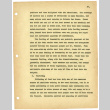
doc
Messhalls in Tule Lake (ddr-csujad-26-23)
Report describing the mess halls of Tule Lake including: administrative organization, operations, personnel, duties, conflicts, wages, food procurement and distribution, food preparation, schedules, sample menus, dietary accommodations, food rationing and shortages, seating capacity, seating arrangements and systems, utensils, and incarceree attendance. The report analyzes workers and incarceree behaviors, status, mental faculties, disposition, religion, age, and gender. …
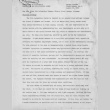
doc
University of California evacuation and resettlement study: The Gila River WRA relocation center, Rivers, Pinal County, Arizona (ddr-csujad-26-27)
Description of the Gila River incarceration camp during the first month of occupation, including camp location, climate, landscape, barracks, issues with camp construction, poor conditions and lack of furnishings, incarcerees who were subjected to upon arrival. Camp administration, food and housing issues, camp employment, security, recreation, and social groups are described and analyzed. Report compiled as …
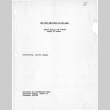
doc
Evacuation and resettlement study, structural report, section II: the first six months at Tule Lake: social changes and a chronology of events (ddr-csujad-26-4)
Report chronicling the first six months Tule Lake camp including the establishment of community activities, employment, schools, and barracks infrastructure. Describes challenges of adjusting to life in camp often using direct quotations from incarcerees to express struggles amid social and cultural groups as well as conflicts and strikes. Several events are also described including a description …
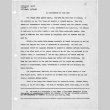
doc
Structural report, chapter I: an introduction to Tule Lake (ddr-csujad-26-3)
Portion of a report compiled as part of the Japanese American Evacuation and Resettlement Study (JERS) describing the landscape, climate, barracks, facilities, schedule, and daily life routines of incarcerees at the Tule Lake incarceration camp. See this object in the California State Universities Japanese American Digitization project site: mei_01_34_001
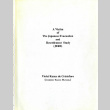
doc
Victim of the Japanese Evacuation and Resettlement Study (JERS) (ddr-csujad-26-31)
An affidavit written to invalidate purported distortions and false accusations made against the author in two books published using research material collected by Rosalie Hankey Wax during de Cristoforo's incarceration at Tule Lake. The books are "Doing Fieldwork: Warnings and Advice" by Rosalie H. Wax and "The Spoilage" by Dorothy Swaine Thomas and Richard S. Nishimoto …
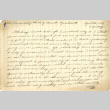
doc
Chapter 6 and 7 personality cards (ddr-csujad-26-34)
Journal entries written by high school students discussing their observations and perspectives on a variety of topics including living in barracks, block noise, lack of privacy, mess hall dining, nosy neighbors, jobs, leisure time, sports, movies, church attendance, the Young Buddhist Association (YBA), family dynamics, social changes, dating, and rumors. Each entry includes the full date …
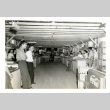
img
Cooperatively owned canteen (ddr-csujad-26-130)
Photo of people working and shopping inside a canteen. Goods are seen divided by type. Verso reads "cooperatively owned canteen." From photo album of Robert Billigmeier. See this object in the California State Universities Japanese American Digitization project site: mei_05_100
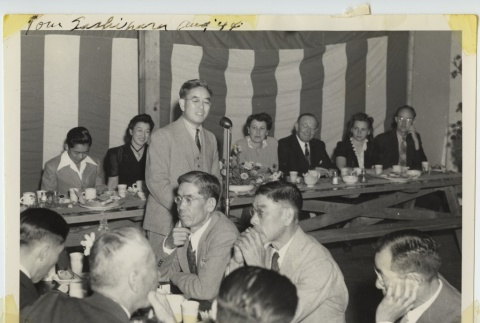
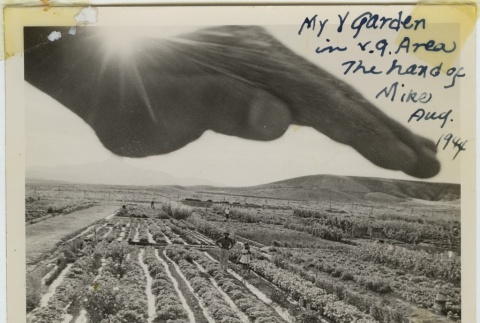
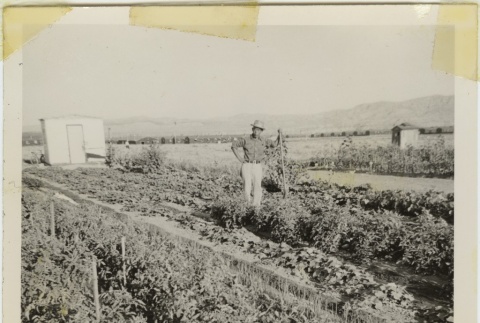
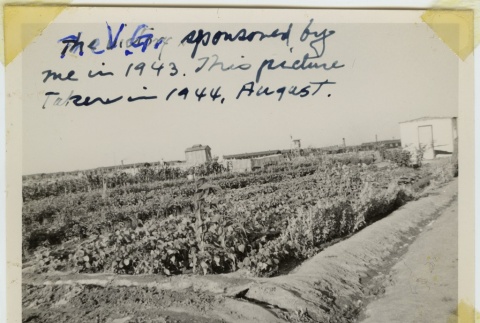
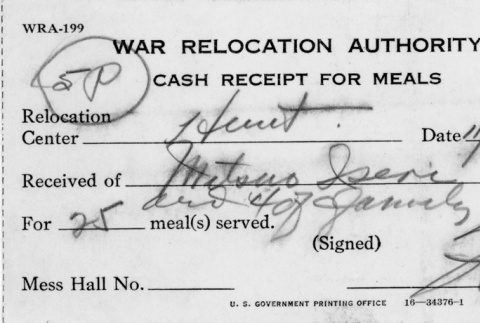
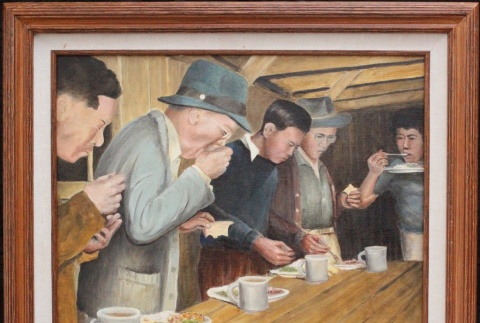
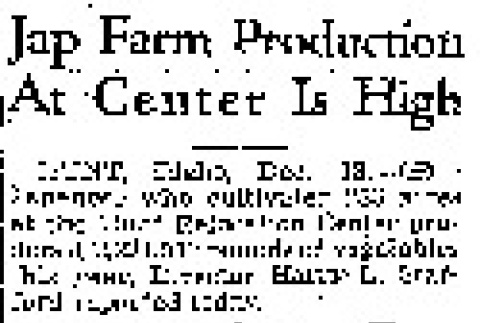
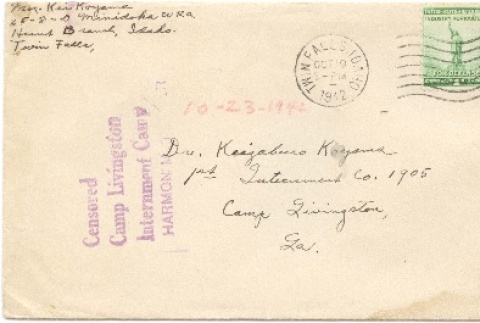
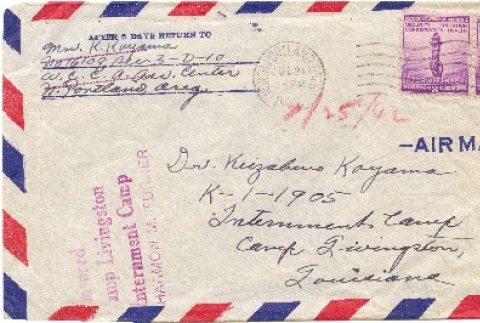

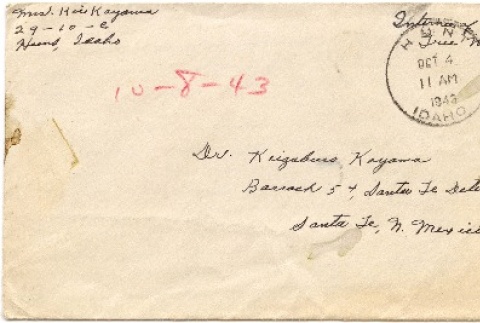
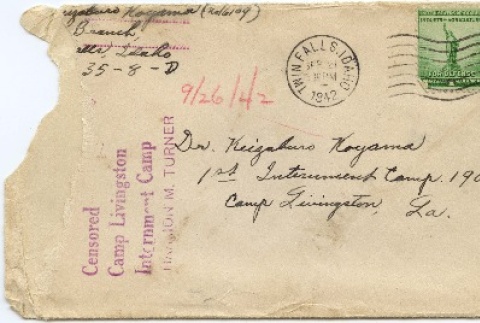

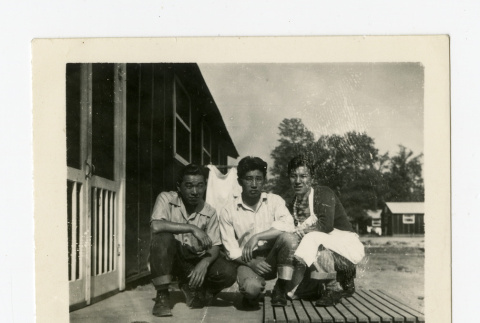
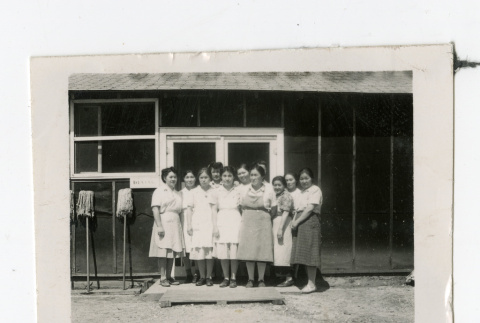
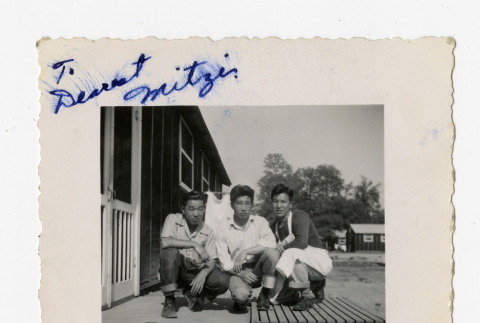
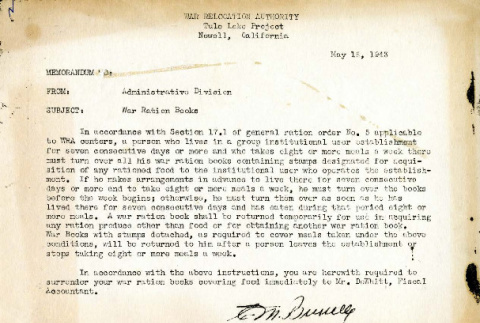
![Farm [farm workers loading truck] (ddr-csujad-26-72)](https://ddr.densho.org/media/cache/f0/32/f0328db5d2e4387d0210cb3480bb137e.jpg)
